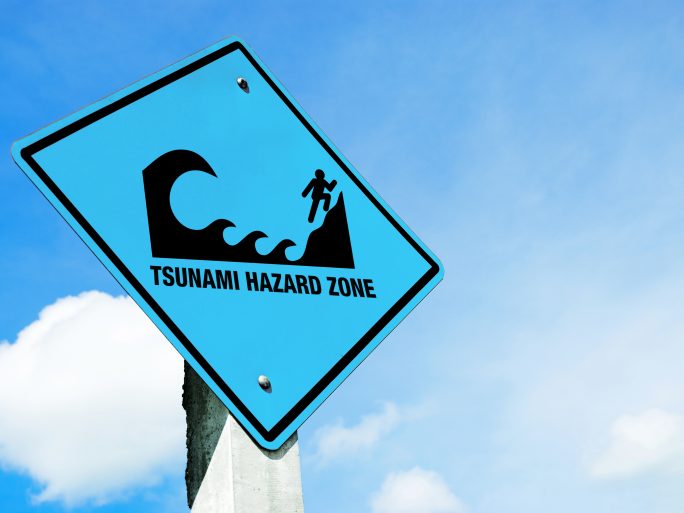AI Warns of Tsunamis Based on Sound Waves

New system from scientists gives more time for precautionary measures such as evacuations.
Using underwater microphones and AI software, researchers at the University of California in Los Angeles and at Cardiff University have developed a tsunami early warning system. It is said to be faster and more reliable than previously used versions. It relies on the fact that underwater earthquakes, as triggers of spring tides, generate sound waves that propagate in water about six times faster than the energy of the water itself. In shallow coastal waters, this results in violent waves.
Signature of nuclear bomb tests
“The sound waves contain information about the source location. They can be recorded at distant locations, even thousands of kilometers from the source. Deriving analytical solutions for the pressure field is key in real-time analysis,” says Usama Kadri, a mathematician and engineering scientist at Cardiff. Underwater microphones, also called hydrophones, are installed in large numbers around the world to record nuclear bomb tests.
The center of the earthquake is determined using triangulation of at least three microphones. AI algorithms use this to determine the magnitude of the quake and the energy transferred to the water, which is crucial to the formation of a tsunami. After all, not every seaquake triggers a catastrophic tidal wave. Detecting sound waves also reduces the number of false alarms, they say.
AI identifies tsunami threat
The researchers tested their algorithm using previously collected sound data and found that it described earthquake parameters almost instantaneously with little computational effort. The engineers then improved the model by including additional information to increase the accuracy of the tsunami characterization.
The tsunami risk prediction work is part of a larger project to improve hazard warning systems. Tsunami classification is a back-end aspect of software that can improve the safety of offshore platforms and vessels.
In particularly vulnerable regions such as the Indian Ocean, numerous sensors are already installed to record the propagation of earthquake waves, wave motion, and water levels along the coasts. However, the advance warning time is only in the range of a few minutes, which is usually insufficient for effective evacuation measures.